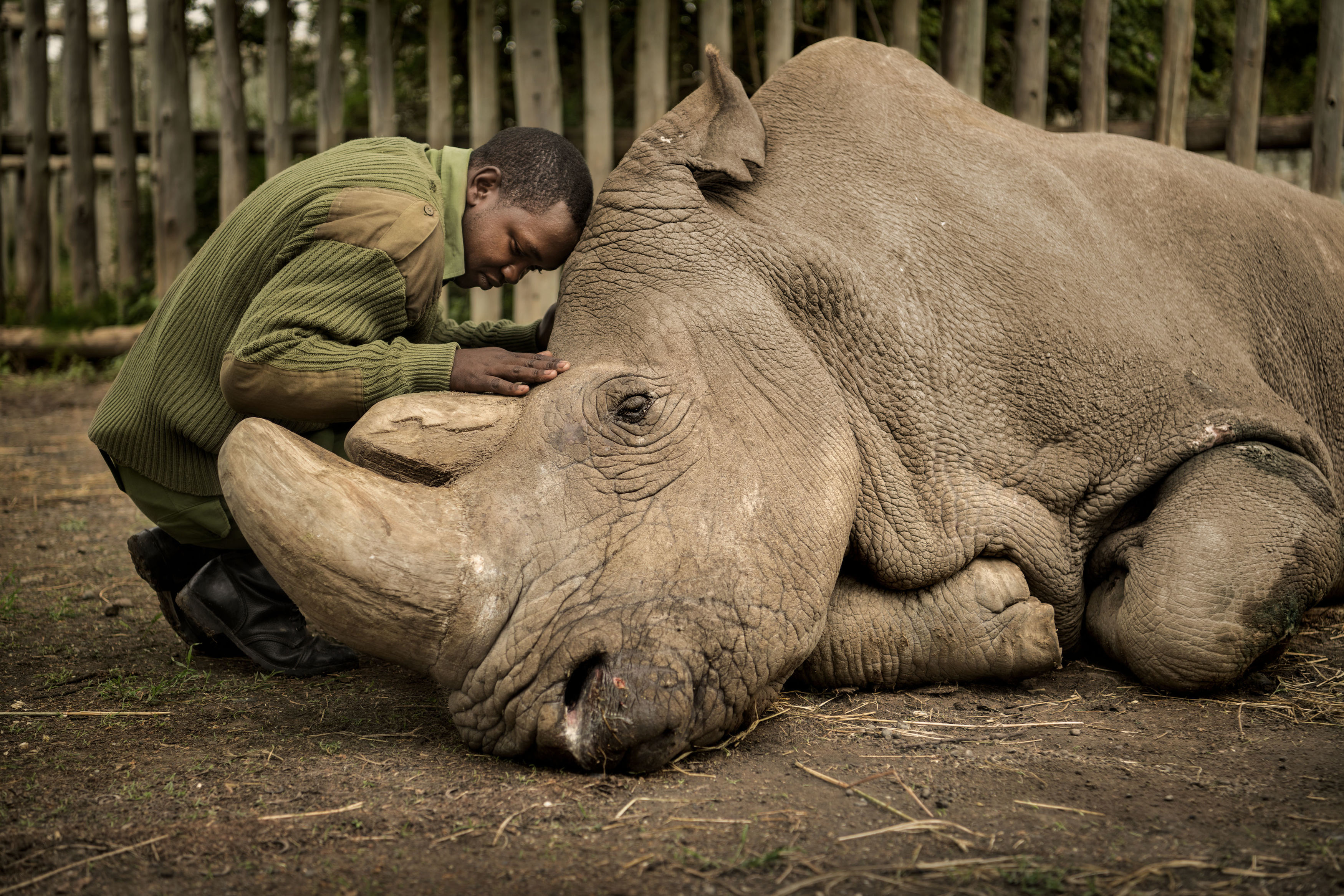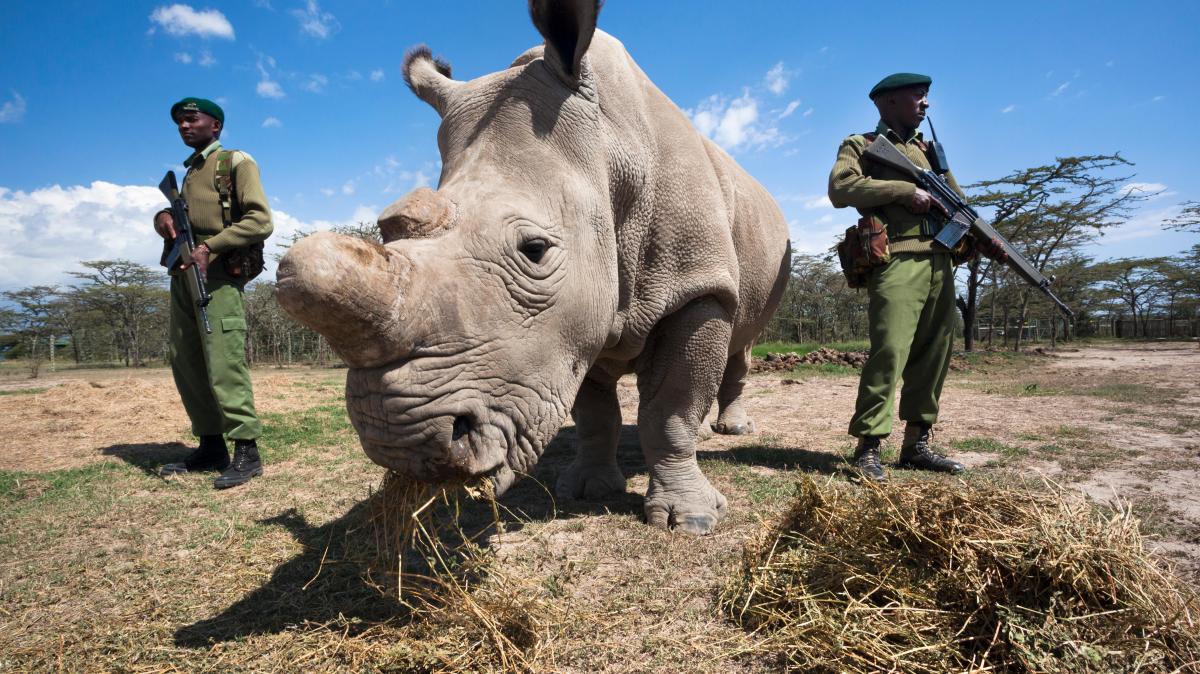Each morning on the Kenyan savannah, the two last northern white rhinos stir beneath the acacias. As they graze under armed guard, an audacious scientific effort is unfolding to try to save their kind.
Both Najin and Fatu are female but incapable of carrying a successful pregnancy. Even though vials of northern white rhino sperm were banked years ago, their subspecies is functionally extinct. A group of conservationists and an American biotech company, however, believe they can change that within a matter of years.
Colossal Biosciences, based in Dallas, Texas, is best known for its “de-extinction” ambitions. It aims to resurrect the woolly mammoth, the dodo and the Tasmanian tiger — or, at least, create passable living replicas of these vanished species.
Working with a consortium of scientists and conservationists from Kenya, Germany, Italy, Japan and the Czech Republic, the company hopes to resurrect a healthy breeding population of northern white rhinos, using gene-editing technology and DNA recovered from animals shot as trophies decades ago.

Sudan, the last male northern white rhino, died in 2018
AMI VITALE/WILDLIFE PHOTOGRAPHER OF THE YEAR/PA WIRE
Matt James, Colossal’s chief animal officer, told Bloomberg: “This is three to four years away. It will be easier and cheaper to recover the population today than it would be if we lost the species altogether and then we tried to bring it back from extinction.”
White rhinos, which are native to sub-Saharan Africa, are divided into two subspecies — southern and northern. Over the past century, conservation efforts have boosted numbers of the southern from just a few dozen to about 16,000. The northern, hunted like its southern cousin for its horn that is used in Asian medicine, has fared less well. It became extinct in the wild in 2008, with only a handful in zoos.
Since 2015, a global effort known as the BioRescue consortium has been working on a rescue strategy. When it began, only three northern white rhinos remained: Najin, Fatu, and a male named Sudan, who died in 2018. Scientists have since created embryos using eggs from the two surviving females and frozen sperm from deceased males. These embryos are stored at Avantea, an Italian institute specialising in animal reproduction.
The embryos will be transferred into surrogate southern white rhinos, but even if a calf is born, ensuring the subspecies has enough genetic diversity to remain healthy will be a formidable challenge.
Colossal and its partners will, in essence, mine samples kept in museum collections around the world for cells containing DNA that broaden the subspecies’s family tree. The objective is to prevent in-breeding.

Fatu, 24, right, and Najin, 36, are unable to carry a pregnancy to term
BEN CURTIS/AP
Jan Stejskal, BioRescue’s project co-ordinator, said: “We realised that some of the genetic variability of the northern white rhino might be kind of preserved in the trophies or in the remains of the northern white rhino that were hunted, let’s say 100 years ago. A skull seems to be the best part from which we could collect a sample.”
Gene-edited eggs and sperm would be created and combined, through IVF, to create rhino embryos — a process the company calls “synthetic genetic rescue”.
Last month, Colossal unveiled a breakthrough in its efforts to resurrect the dodo — or, at least, to produce a bird that looks like one. It had succeeded in creating pigeon primordial germ cells, the biological building blocks from which a new lineage of dodo-like creatures could potentially be fashioned.
• Dodo one step closer to coming back from extinction
As with the rhinos, the plan is to harness genetics recovered from long-dead museum samples. Ben Lamm, the chief executive, said: “Our goal is to make enough dodos with enough genetic diversity engineered into them that we can put them back into the wild where they can truly thrive. So we’re not looking to make two dodos, we’re looking to make thousands.
“Rough ballpark, we think it’s still five to seven years out, but it’s not twenty years out.”
However, some conservationists argue that resources would be better spent protecting existing habitats and living species rather than venturing into genetic experiments with uncertain outcomes. Others fear that the ability to “recreate” species might dull the urgency to protect them in the first place.
The rhino project, focused on a species that is yet to vanish, might help Colossal deflect some of those criticisms.

